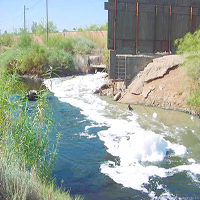
Why is this significant? PFCs are persistent in the environment and slow to break down, easily contaminate water supplies, and are toxic in even very low quantities. If you’ve been following our blogs, you know that PFC’s are “unregulated” by EPA and most state agencies. That means landfills—even those on the Superfund list—do not routinely test for PFC contamination. The Warminster and Willow Grove Naval base sites outside Philadelphia were on the Superfund list for over 20 years before the first PFC testing was done there.
So there are hundreds of landfills out there whose groundwater has never been checked for PFC’s. The first test done on the Burgess Brothers Landfill in Vermont showed PFOA and PFOA exceeding 1,000 ppt—more than fifty times the Vermont standard.
This means that landfills like Burgess—which was known to accept waste from companies who used a lot of PFCs—are likely to be yet another source of groundwater contamination by PFCs.
For more information, call our environmental lawyers in Pennsylvania at Williams Cuker Berezofsky at 215-557-0099 or contact us online.

